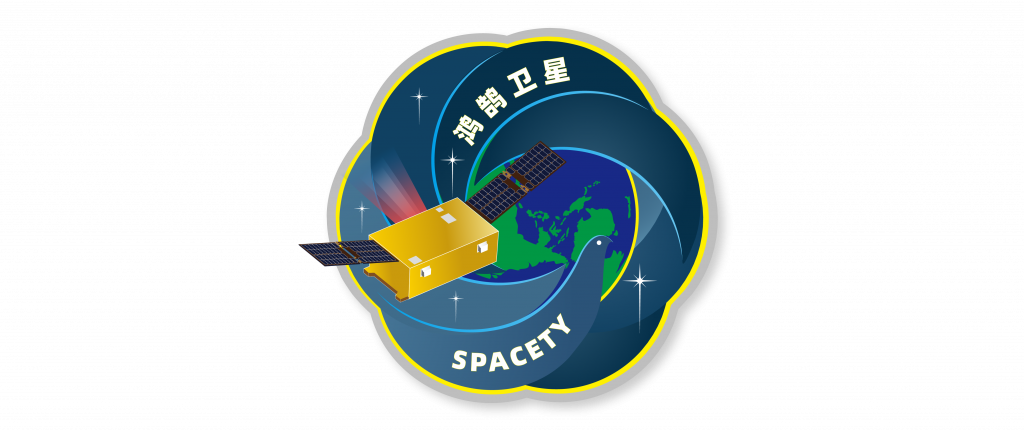News
Spacety made a complete success on its 18th launching mission! 30 satellites have been launched into space.

Satellite Honghu and Satellite TY-33, designed and produced by Changsha Spacety Co., Ltd (Spacety in short), were sent up by Zhuque-2 Telemetry-3 Carrier Rocket at Jiuquan Satellite Launch Center on 07:39 pm, December 9, 2023. With the successful orbit injection, satellites worked normally in good condition and will permit the subsequent implementation of a range of space science experimental verifications.
Satellite Honghu is a 50kg-class space science experiment satellite independently designed and produced by Spacety. It carries the integrated electronic payload, xenon gas Hall effect thruster payload and krypton gas Hall effect thruster payload developed by Shanghai Lanjian Hongqin Science and Technology Co., Ltd., and will complete the missions including Hall effect thruster orbit control function and performance verification, integrated electronic payload device and power-on/power-off lifetime verification. This marks the first attempt in China to achieve cumulative 100-kilometerlevel orbit control experiments employing xenon and krypton permanent magnet electric thruster systems, in addition to accomplishing approximately 3,000 hours of inorbit ignition experiments and 10,000 times of power-on/power-off lifetime verification of the Hall electric effect thruster system.
The Honghu satellite also carries the “Xingcheng II” argon gas ion thruster developed by Xingcheng Huiyu (Beijing) Technology Co., Ltd.
This type of thruster utilizes argon as the propellant, which significantly lowers the costs compared to xenon and krypton gases. Based on ion propulsion technology, it separates ionization from acceleration, achieving an impulse of up to 1500 seconds with
a wide thrust adjustment range. In addition, its integrated and centralized layout design facilitates satellite installation and control. This thruster boasts high reliability and costeffectiveness, making it suitable for various orbital control actions such as orbit
injection, networking attitude adjustments, and decommissioning of small satellites. It significantly reduces the deployment cost of satellite constellations.
This flight marks the second in-orbit verification of “Xingcheng II” argon gas ion thruster, mainly conducting electric propulsion telemetry and control, ignition, operation, switch-off procedures, and in-orbit experiments under prolonged working conditions to provide technical support for subsequent product development and applications.
Satellite TY-33 is a 50kg-class space science experiment satellite jointly developed by the Spacety and Hunan University of Science and Technology. It carries the remote sensing camera modules and multiple novel technology payloads, utilizing several platform technologies independently developed by Spacety for the first time, provides more reliable temperature control, thermal protection and energy guarantees for the routine in-orbit operation of payloads.
In particular, Satellite TY-33 adopts newly developed thermal control technology to achieve precise temperature control for satellites in space-constrained space, with a design value of temperature control accuracy better than 0.5°C, and with an expected
reduction of temperature control energy consumption by more than 50%, which provides reliable environmental protection for highly temperature-sensitive scientific research payloads. In addition, the multi-layer of TY-33 Satellite utilizes high-performance
composites, further enhancing the it’s radiation protection capability.
In terms of power supply, Satellite TY-33 for the first time adopts the high power consumption and long duration power supply technology independently developed by Spacety, which enables the satellite to maintain power-on status under normalized high
current payload, that meets the demand for uninterrupted in-orbit experiments of payloads.
Satellite TY-33 also carries a scientific research payload independently developed by Beijing University of Posts and Telecommunications utilizing the open-source real-time dual-kernel operating system RROS as the fundamental architecture and the Rust programming language. This payload will accomplish the general missions represented by tensorflow/k8s and real-time missions represented by real-time file system and real-time network transmission on the satellite, as well as guarantee the normal execution of upper-layer applications and scientific research missions, such as inter-satellite and ground latency measurement, live video broadcasting, on-board web chatting service, pseudo-ssh experiments, etc. This marks the world’s first dual-kernel operating system written by Rust on the satellite operation.
RROS has attained high security and low power consumption while taking into account versatility and real-time capability, adjusting to satellite operation and fulfilling the intricate application demands of satellite payloads, as well as offering a robust operating system provision for the forthcoming standardized and generalized satellite platforms.
The successful launch of Satellite Honghu and Satellite TY-33 signifies that Spacety has further consolidated its designing and producing capability of the 50kg-class satellite platform, showcased the cutting-edge technological proficiency of Spacety in
the realm of scientific research satellites development, as well as denotes that Spacety’s scientific research satellite business is making steady progress, deepening exploration its development, and achieving mutually beneficial development.
This is the launch 18th mission of Spacety. By this stage, Spacety has accomplished the successful deployment of 30 satellites. Spacety offers customers unparalleled cost-effective and integrated services, persistently takes the lead in China’s private
spaceflight field in terms of satellite launch quantities and service capabilities.
About Spacety
Spacety is a fast-growing company providing satellite-based services globally. It was founded in 2016. It established its international headquarters in Luxembourg in 2019. A world leader in cubesats and smallsats, it has developed, launched, and operates 30 satellites for science and technology demonstration missions. As a leading provider of satellite-based services, it provides fast, frequent, flexible, and low-cost space missions with its advanced and reliable small satellite fleet. These space missions support science experiments or observation, and in-orbit demonstrations and/or validations of space technologies and products, or space systems. Those quick turnaround and end-to-end services have enabled world class space research and helped innovative space technologies to gain space heritage. Spacety is building and deploying a microwave-based (Synthetic Aperture Radar) satellite Earth Observation constellation to provide the world with global coverage and real-time imagery data as a service (DaaS). This C-band SAR constellation monitors and observes the Earth, day and night, rain or shine, and make SAR imagery of every point on Earth accessible and affordable to users. The SAR data will be distributed worldwide and will enable innovative solutions to manage our changing world and make it better.
http://www.spacety.com/
High resolution photos can be provided upon request to:

